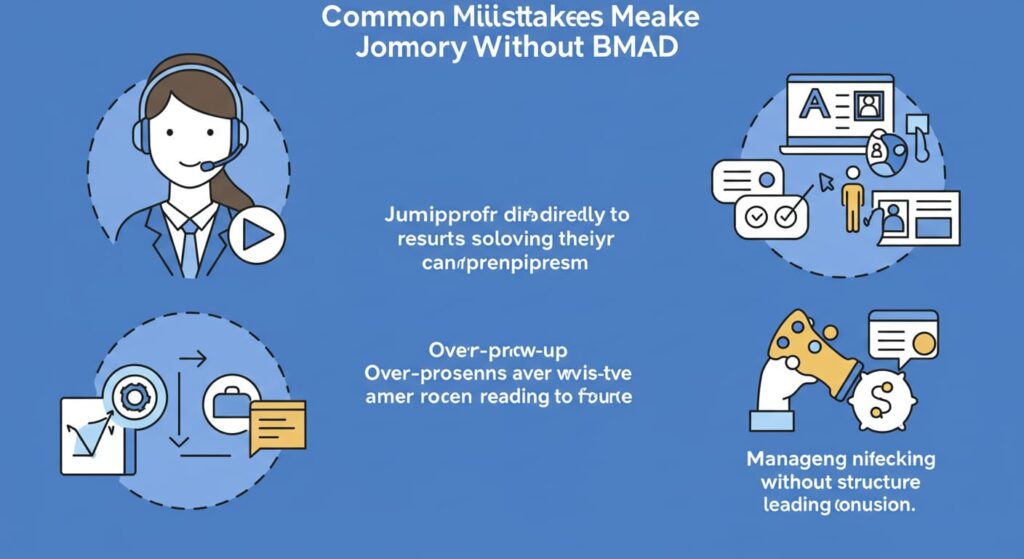In the world of modern business, customer engagement strategies are constantly evolving. Among the emerging approaches, the BMAD method suggested order of agent engagement stands out as a structured way to optimize interactions between businesses, agents, and clients. It brings clarity to how agents should engage, in what order, and with what strategies, ensuring better efficiency, satisfaction, and outcomes.
This detailed guide covers the concept, its relevance, how it works in practice, and why it is becoming a standard in agent engagement strategies.
What is the BMAD Method?
The BMAD method is a structured engagement model designed to guide agents through a specific sequence of actions when dealing with clients or tasks. Each letter in BMAD represents a step or a principle that supports efficiency and clarity in communication:
- B – Build: Establish rapport and trust with the client.
- M – Manage: Handle the situation effectively, setting expectations clearly.
- A – Assist: Provide accurate solutions, support, or resources.
- D – Deliver: Ensure closure, follow-up, and fulfillment of promises.
The suggested order of agent engagement ensures that each phase builds upon the previous one, making client interactions more structured and impactful.
Why the Suggested Order Matters
Engagement without order can feel disorganized or incomplete. By following the BMAD method suggested order of agent engagement, agents can:

- Avoid miscommunication.
- Build stronger client relationships.
- Save time and resources.
- Ensure consistent service delivery.
- Enhance overall customer experience.
The order matters because it transforms a random interaction into a well-structured journey for the client.
Breaking Down the BMAD Method in Detail
1. Build: Creating the First Connection
The first step focuses on relationship building. Whether it’s a call, chat, or meeting, agents must show empathy, professionalism, and attentiveness. Building rapport makes the client more receptive to further communication.
Best practices:
- Use positive language.
- Actively listen to client concerns.
- Show genuine interest in their needs.
2. Manage: Setting the Stage
After establishing trust, the agent moves to managing expectations. This step involves identifying the problem clearly and setting realistic boundaries. It helps clients feel guided and reassured.
Best practices:
- Summarize the issue clearly.
- Communicate timelines.
- Be transparent about possible outcomes.
3. Assist: Providing Solutions
The third step emphasizes action and support. This is where agents solve problems, provide guidance, or direct clients to the right resources. The goal is efficiency without compromising quality.
Best practices:
- Provide clear, step-by-step instructions.
- Use tools and knowledge bases for accuracy.
- Keep the client updated during the process.
4. Deliver: Closing with Confidence
The final stage ensures closure and delivery. Agents confirm the resolution, follow up if needed, and reinforce trust. A successful closure not only solves the current issue but also strengthens long-term loyalty.
Best practices:
- Confirm if the client is satisfied.
- Provide additional resources.
- Thank them for their time and trust.
Also read: Father’s Day Gift Guide
Benefits of Using the BMAD Method
- Consistency Across Agents – All agents follow the same order, ensuring a uniform client experience.
- Time Efficiency – Streamlined engagement prevents back-and-forth confusion.
- Customer Satisfaction – Clients feel heard, supported, and valued.
- Scalability – The method can be applied to teams of any size.
- Improved Training – New agents can easily learn and follow the sequence.
BMAD in Different Industries
The BMAD method suggested order of agent engagement isn’t limited to one sector. It adapts well to multiple industries:
- Customer Support: Reduces call resolution time and increases satisfaction.
- Sales: Builds trust, sets expectations, and closes deals faster.
- Healthcare: Provides structured communication for sensitive patient concerns.
- Education: Guides students and parents through inquiries systematically.
- Finance: Ensures clarity in complex financial discussions.
Common Mistakes Agents Make Without BMAD

- Jumping directly to problem-solving without building rapport.
- Over-promising results they cannot deliver.
- Ignoring follow-up after resolving an issue.
- Managing interactions without structure, leading to confusion.
The BMAD method prevents these pitfalls by enforcing a disciplined flow.
How Businesses Can Implement BMAD
- Training Programs: Train agents with role-playing exercises following the BMAD steps.
- Monitoring Tools: Use CRM systems to track agent adherence.
- Feedback Loops: Collect customer feedback to measure BMAD effectiveness.
- Regular Workshops: Keep agents updated on refinements in engagement practices.
Technology Supporting BMAD Engagement
Modern technology enhances the BMAD approach:
- AI chatbots: Handle repetitive tasks so agents can focus on BMAD principles.
- Analytics tools: Track agent performance based on BMAD stages.
- CRM software: Helps manage client interactions in order.
- Omnichannel support systems: Ensure BMAD works across email, phone, chat, and social media.
Also read: Women Healing in Nature
Advantages Over Other Engagement Methods
Unlike generic models, the BMAD method suggested order of agent engagement emphasizes sequence and flow. Where other methods may focus only on customer satisfaction, BMAD ensures:
- Orderly communication.
- Step-by-step trust-building.
- Long-term loyalty rather than one-time resolutions.
Real-Life Example
Imagine a customer contacting a telecom company about a billing issue:
- Build: The agent greets politely and shows empathy.
- Manage: They confirm the billing issue and explain how long resolution might take.
- Assist: The agent checks the account, explains charges, and corrects errors.
- Deliver: They confirm the correction, send proof, and thank the customer.
This structured flow results in satisfaction and reduced escalation.
The Future of BMAD Engagement
With businesses shifting towards digital-first strategies, the BMAD method will become even more relevant. AI and automation will handle repetitive tasks, but human agents will still rely on BMAD to maintain empathy, structure, and trust. The method may also evolve into industry-specific variations.
FAQs:
Q1. What does BMAD stand for?
BMAD stands for Build, Manage, Assist, and Deliver, a method for structured agent engagement.
Q2. Why follow the suggested order of BMAD?
The order ensures smooth communication, consistency, and client satisfaction.
Q3. Is BMAD used only in customer service?
No, it applies to sales, healthcare, education, finance, and other industries.
Q4. How does BMAD improve efficiency?
It prevents confusion by giving agents a clear step-by-step engagement path.
Q5. Can new agents learn BMAD easily?
Yes, its structured nature makes it simple for training and onboarding.
Q6. Does BMAD replace technology?
No, it works alongside technology like CRM systems and AI tools.
Q7. What happens if the BMAD order is skipped?
Skipping steps may lead to miscommunication, dissatisfaction, or unresolved issues.
Q8. How can companies implement BMAD?
Through training, monitoring, feedback, and regular workshops.
Q9. Is BMAD customer-focused or business-focused?
It’s both—it balances client needs with business efficiency.
Q10. Will BMAD remain relevant in the future?
Yes, especially as businesses seek structured engagement in digital-first environments.
Conclusion:
The BMAD method suggested order of agent engagement is more than just a strategy—it’s a blueprint for effective and meaningful customer interactions. By following the structured steps of Build, Manage, Assist, and Deliver, businesses ensure clarity, consistency, and trust in every engagement.
In a world where customer experience defines business success, adopting BMAD can set companies apart. Whether in sales, support, healthcare, or finance, this method equips agents with a powerful framework to connect, resolve, and retain clients.
Related post:
















